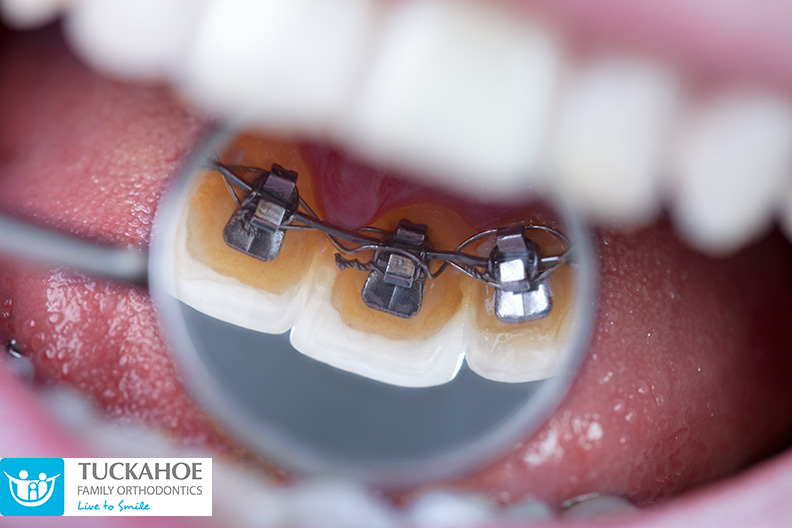The Buzz on Legacy Orthodontics
Table of ContentsLegacy Orthodontics Things To Know Before You Get This9 Easy Facts About Legacy Orthodontics ExplainedSome Known Facts About Legacy Orthodontics.The Legacy Orthodontics StatementsThe Best Strategy To Use For Legacy Orthodontics
In enhancement, we use adjustable therapy timetables, versatile settlement options and an enjoyable, delightful experience.An orthodontist is a dentist educated to diagnose, stop, and deal with teeth and jaw irregularities. Orthodontists work with individuals of all ages, from children to adults.
Malocclusion, or misaligned teeth, can cause oral problems, including dental caries, gum disease, and tough or uncomfortable eating. But not every person is born with straight teeth. If you have a poor bite or large spaces between your teeth, you might intend to seek advice from a dental expert specializing in orthodontic care.
What Does Legacy Orthodontics Do?
( Photo Credit Scores: DigitalVision/Getty Images) Orthodontists use fixed and removable dental tools, like dental braces, retainers, and bands, to change the placement of teeth in your mouth. Orthodontic therapy is for oral abnormalities, consisting of: Crooked teethBite issues, like an overbite or an underbiteCrowded teeth or teeth that are as well far apartJaw misalignmentThe goal of orthodontic treatment is to improve your bite.
A healthy and balanced bite ensures you can eat, chew, and speak effectively. While you might consider orthodontists as primarily for kids or young adults who need braces, they can fix oral problems at any type of age. Orthodontists go to college, oral college, and orthodontic college. After graduation, they spend 2 or 3 years in an orthodontic residency program.
All orthodontists are dental professionals, however not all dental experts are orthodontists. Orthodontic residency programs use intensive, focused direction for dental experts. They focus on two areas: Exactly how to effectively and securely relocate teeth Just how to properly assist growth in the teeth, jaw, and faceOnce an orthodontist has completed training, they have the alternative to come to be board licensed.
Getting My Legacy Orthodontics To Work
Imbalance, or malocclusion, is the most typical factor individuals see an orthodontist. It is hereditary and is the result of size distinctions in between the top and reduced jaw or between the jaw and teeth. Malocclusion causes tooth overcrowding, a twisted jaw, or uneven bite patterns. Malocclusion is typically treated with: Your orthodontist affixes metal, ceramic, or plastic square bonds to your teeth.
If you have only small malocclusion, you might have the ability to utilize clear dental braces, called aligners, as opposed to conventional dental braces (https://ameblo.jp/legacyortho/entry-12869554383.html). Some individuals require a headwear to help relocate teeth right into line with pressure from outside the mouth. After braces or aligners, you'll need to use a retainer. A retainer is a customized device that keeps your teeth in position.
They're most frequently utilized on youngsters. They can produce extra room in the mouth without needing to draw teeth. If you have a major underbite or overbite, you could require orthognathic surgical treatment (likewise called orthodontic surgical procedure) to lengthen or reduce your jaw. Orthodontists make use of wires, surgical screws, or plates to sustain your jaw bone.
You might require to see an orthodontist if you have: Crowding or not sufficient space for every one of your teethOverbite, when your upper teeth come by your bottom teethUnderbite, when your bottom teeth are too far forwardSpacing or issues with gapsCrossbite, which is when your top teeth fit behind your bottom teeth when your mouth is closedOpen bite or a vertical space in between your front bottom and upper teethMisplaced midline, when the center of your bottom and upper teeth don't line up Fixing a dental malocclusion can: Make biting, chewing, and talking easierImprove the symmetry of our face and your overall appearanceEase pain from temporomandibular joint disordersDifferent your teeth and make them simpler to clean up, helping prevent tooth decay or cavities It's often a dental practitioner who initially notices misaligned teeth during a regular test.
Getting My Legacy Orthodontics To Work

Throughout your initial orthodontic consultation, you'll likely have: A dental examPhotos taken of your face and smileDental X-raysPanoramic (360 level) X-rays of your face and headImpressions to produce molds of your teethThese tests will certainly aid your orthodontist recognize exactly how to continue with your therapy. orthodontist. An orthodontist is a dental expert that's had training to treat your teeth and jaw
Orthodontists may carry out surgical procedure, exams,X-rays,and even more to help you attain a more comfy, healthier smile. An orthodontist is focused on your bite, so something like a broken tooth would be taken care of by a dental expert. Orthodontists are dental professionals yet not all dental practitioners are orthodontists. Orthodontists are focused on your bite, or the means your teeth fit with each other, and the straightness of your teeth.
Ever before wondered just how celebrities constantly seem to have flawlessly lined up teeth? The response typically hinges on the proficient hands of an orthodontist. But what specifically does an orthodontist do? Orthodontists are dental experts that concentrate on remedying irregularities in the teeth and jaws. Their expertise discover this surpasses simply creating a lovely smile; it includes enhancing your total oral wellness and function.
Indicators on Legacy Orthodontics You Should Know

, orthodontists have a varied toolkit at their disposal. These reliable dental braces use a system of brackets bonded to the teeth and connected by wires.
Clear aligners, like Invisalign, are a preferred option for people looking for a more discreet treatment option. These detachable trays are customized to gradually shift the teeth's placement. Headwear may be used along with braces or aligners to use extra targeted forces, especially for dealing with jaw disparities. In cases of narrow jaws, palatal expanders can be used to produce area for proper tooth positioning.